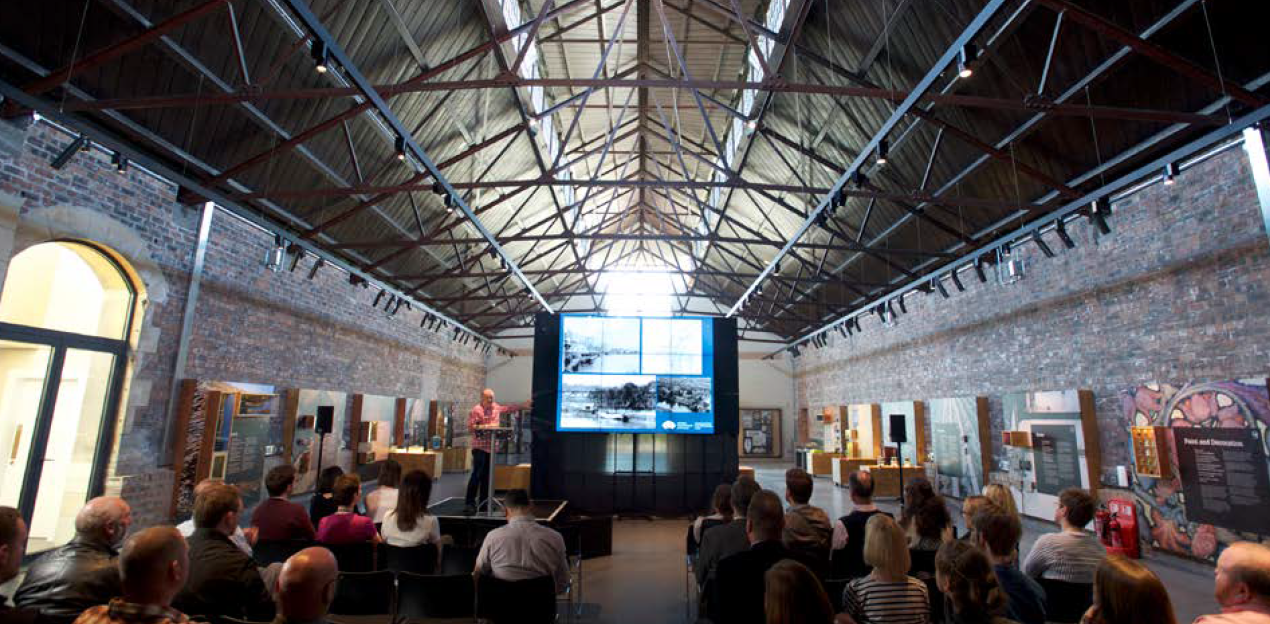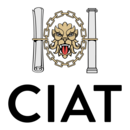The Engine Shed

|
| The Engine Shed is Scotland’s dedicated building conservation centre, based in Stirling. Run by Historic Environment Scotland, it serves as a central hub for building and conservation professionals and the general public. |
The Engine Shed is a bit of a mystery. It was built sometime between 1896 and 1913, first appearing on the 1913 Ordnance Survey. Unfortunately, as a military building most of its history has been destroyed or lost. Stirling County Council were keen to see the Engine Shed brought back to life and offering something to local communities and beyond. In 2015, they sold it to Historic Environment Scotland for the bargain price of one pound.
The materials we used in the restoration of the Engine Shed were selected on the basis of three key criteria: sustainability, promoting traditional skills and materials and supporting locally-available materials and manufacturers.
The Engine Shed is a simple yet instantly recognisable building. It is single storey, approximately 11m high, 14m wide and 41m long, with sandstone walls, a slate roof and a clerestory lantern that runs the length of the building.
The high-level clerestory and the raised roof and uninterrupted metal windows give the Engine Shed its iconic shape and character, and we quickly developed a conservation strategy for the clerestory at the beginning of the renovation project. Hand cleaning took five hours per window, as they were cleaned to a SA2.5 standard by a specialist contractor.
We have managed to balance innovation and traditional materials to conserve the character of an old military building whilst improving its environmental impact.
We discovered that the stone the Engine Shed was built from came from two different quarries in North Lanarkshire. However, all the quarries in the area are now closed, which made it quite difficult to find suitable replacement stone.
Large sections of timber were needed for the frames of the two wings of the building. Glulam timber from European Larch was considered the best choice, manufactured from smaller, commercially-available timber sections. 100% of the larch glulam (about 50.03m3) was 100% PEFC certified. All the timber elements were sourced from well-managed forests and/or plantations.
Glulam timber was an energy efficient choice too, as achieving the same structural performance as the glulam in either concrete or steel would have significantly increased the energy cost. Glulam timber is also much lighter than other framing techniques, and resulted in savings in the foundations, construction and transport of the material.
The base of the columns is secured with 6no internally resin threaded rods, eliminating the visual aesthetic of fixings at low level. At high level the frames are connected with industrial galvanized bolts. There are a total of 95 Glulam members on the Engine Shed and 1640 bolts.
The building was designed to be responsive and adaptable, both now and in the future, and the use of a timber portal frame provided a very flexible building. No internal walls are load bearing and we are able to divide spaces within the building to meet all the different needs of our visitors.
By leaving the interior brickwork exposed, we are respecting the skill and materials that went into its construction. However, the gables have both been lined with a clay board, a composite material consisting of clay and lightweight aggregates, including reed matting, straw, hemp and jute fabric, whilst the laboratory walls were finished with clay paint. A base layer of clay plaster and a finishing coat of pigmented clay plaster skim were applied to the clay board.
The new sheds are insulated with 300mm of sheep’s wool insulation packed between the timber JJI Wall and roof structure making the new sheds thermally efficient with a U-Value of 0.11.
The ‘flowcrete’ finished floor is chemically resistant and antimicrobial (so controls most bacteria and fungi which come into contact with floor).
The ceilings in the wings are made from heraboard, a sustainable material made mostly from wood, water and magnesite. The wood is sourced from sustainable Austrian forestry and the board is recyclable and has a lifespan of up to 80 years. These boards have an extremely low impact on the environment and their properties complement the clay board and plaster. By absorbing and reducing background noise and helping regulate humidity and climate, the materials in the ceilings improve visitor wellbeing, concentration, efficiency and performance.
We have taken an old, neglected building and turned it into a modern, healthy, comfortable environment for people to come and learn about their built heritage.
The Engine Shed was 2018 winner of CIAT’s Award for Excellence in Architectural Technology. The Judge’s comments were:
An interesting approach to this historically-significant building. Excellent conservation practice is demonstrated through the use of traditional materials, technology and sustainability to demonstrate the adaption and reuse of a historic building for a new life. Careful consideration of the existing structure with a non-excessive insertion creates an interesting and contemporary space.
The Engine Shed demonstrates how new and traditional materials create not just an aesthetically pleasing environment to champion the crafts and skills required to complete this project but to showcase the applications of technical excellence in Architectural Technology. With sustainability at the heart of the design, the judges were unanimous in their decision that the project is the worthy winner of the 2018 Award for Excellence in Architectural Technology.
This article originally appeared in CIAT’s Architectural Technology Journal, published in Autumn 2018. It was written by Historic Environment Scotland / Reiach & Hall Architects.
--CIAT
[edit] Related articles on Designing Buildings Wiki
- CIAT.
- Conservation in action at the Engine Shed.
- Alterations and extension to The Grange.
- AgriSTEM.
- Architectural Technology Awards 2017.
- Architectural Technology Awards 2018.
- Architectural technologist - delineation of roles.
- Architectural technician.
- Architectural technologist.
- Old Gale Farm, Ambleside.
- Re-thatching a Hebridean blackhouse.
- Titanic Quarter.
IHBC NewsBlog
Old Sarum fire in listed (& disputed) WW1 Hangar - Wiltshire Council has sought legal advice after fire engulfed a listed First World War hangar that was embroiled in a lengthy planning dispute.
UK Antarctic Heritage Trust launches ‘Virtual Visit’ website area
The Trust calls on people to 'Immerse yourself in our heritage – Making Antarctica Accessible'
Southend Council pledge to force Kursaal owners to maintain building
The Council has pledged to use ‘every tool in the toolbox’ if urgent repairs are not carried out.
HE’s Research Magazine publishes a major study of the heritage of England’s suburbs
The article traces the long evolution of an internal programme to research 200 years of suburban growth
IHBC Context 183 Wellbeing and Heritage published
The issue explores issues at the intersection of heritage and wellbeing.
SAVE celebrates 50 years of campaigning 1975-2025
SAVE Britain’s Heritage has announced events across the country to celebrate bringing new life to remarkable buildings.
IHBC Annual School 2025 - Shrewsbury 12-14 June
Themed Heritage in Context – Value: Plan: Change, join in-person or online.
200th Anniversary Celebration of the Modern Railway Planned
The Stockton & Darlington Railway opened on September 27, 1825.
Competence Framework Launched for Sustainability in the Built Environment
The Construction Industry Council (CIC) and the Edge have jointly published the framework.
Historic England Launches Wellbeing Strategy for Heritage
Whether through visiting, volunteering, learning or creative practice, engaging with heritage can strengthen confidence, resilience, hope and social connections.














